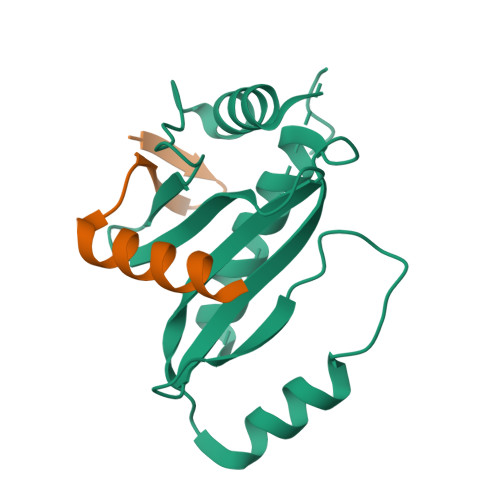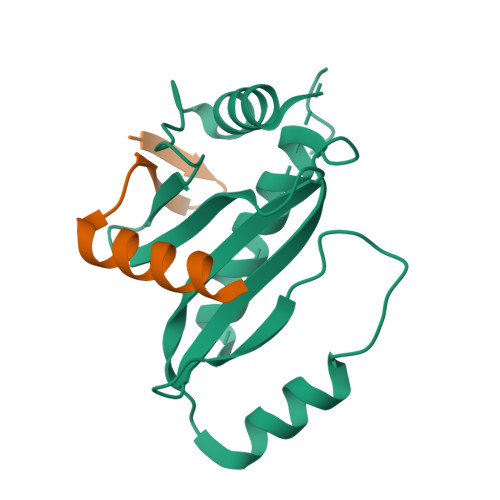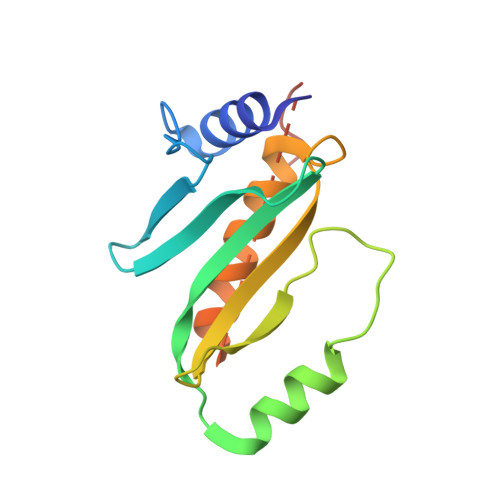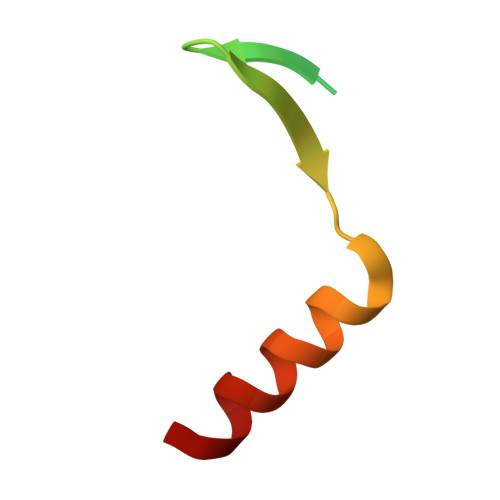Context-dependent protein folding of a virulence peptide in the bacterial and host environments: structure of an SycH-YopH chaperone-effector complex.
Vujanac, M., Stebbins, C.E.(2013) Acta Crystallogr D Biol Crystallogr 69: 546-554
- PubMed: 23519663
- DOI: https://doi.org/10.1107/S0907444912051086
- Primary Citation of Related Structures:
4GF3 - PubMed Abstract:
Yersinia pestis injects numerous bacterial proteins into host cells through an organic nanomachine called the type 3 secretion system. One such substrate is the tyrosine phosphatase YopH, which requires an interaction with a cognate chaperone in order to be effectively injected. Here, the first crystal structure of a SycH-YopH complex is reported, determined to 1.9 Å resolution. The structure reveals the presence of (i) a nonglobular polypeptide in YopH, (ii) a so-called β-motif in YopH and (iii) a conserved hydrophobic patch in SycH that recognizes the β-motif. Biochemical studies establish that the β-motif is critical to the stability of this complex. Finally, since previous work has shown that the N-terminal portion of YopH adopts a globular fold that is functional in the host cell, aspects of how this polypeptide adopts radically different folds in the host and in the bacterial environments are analysed.
Organizational Affiliation:
Laboratory of Structural Microbiology, The Rockefeller University, New York, NY 10065, USA.



















